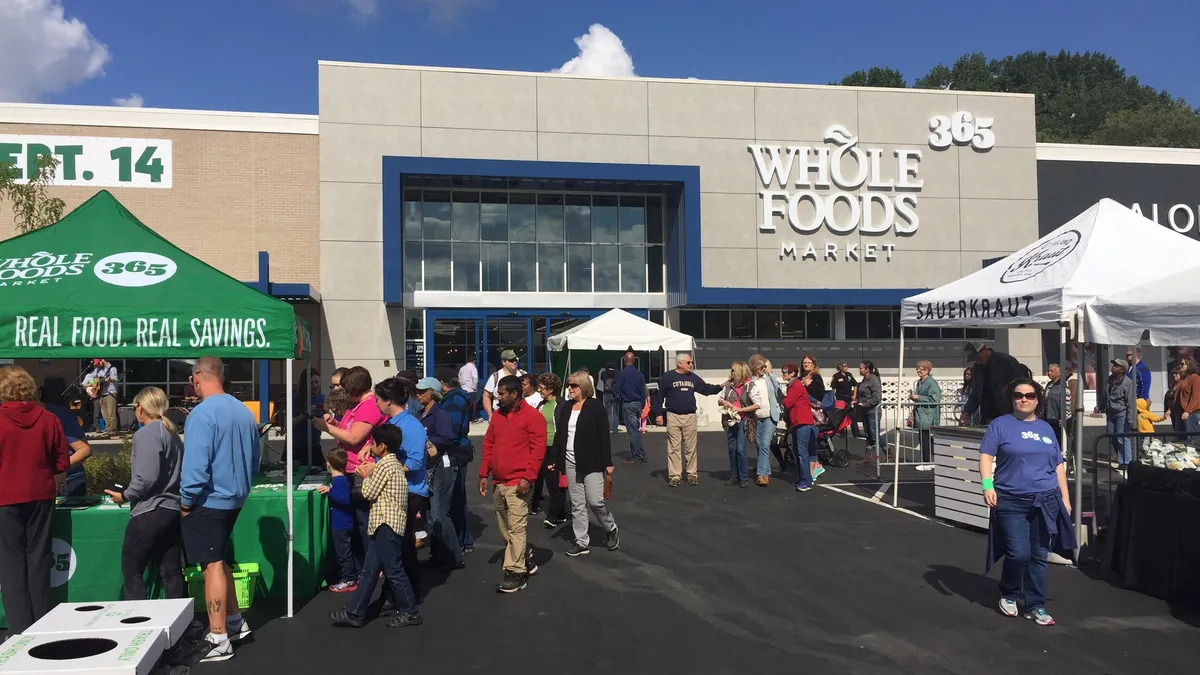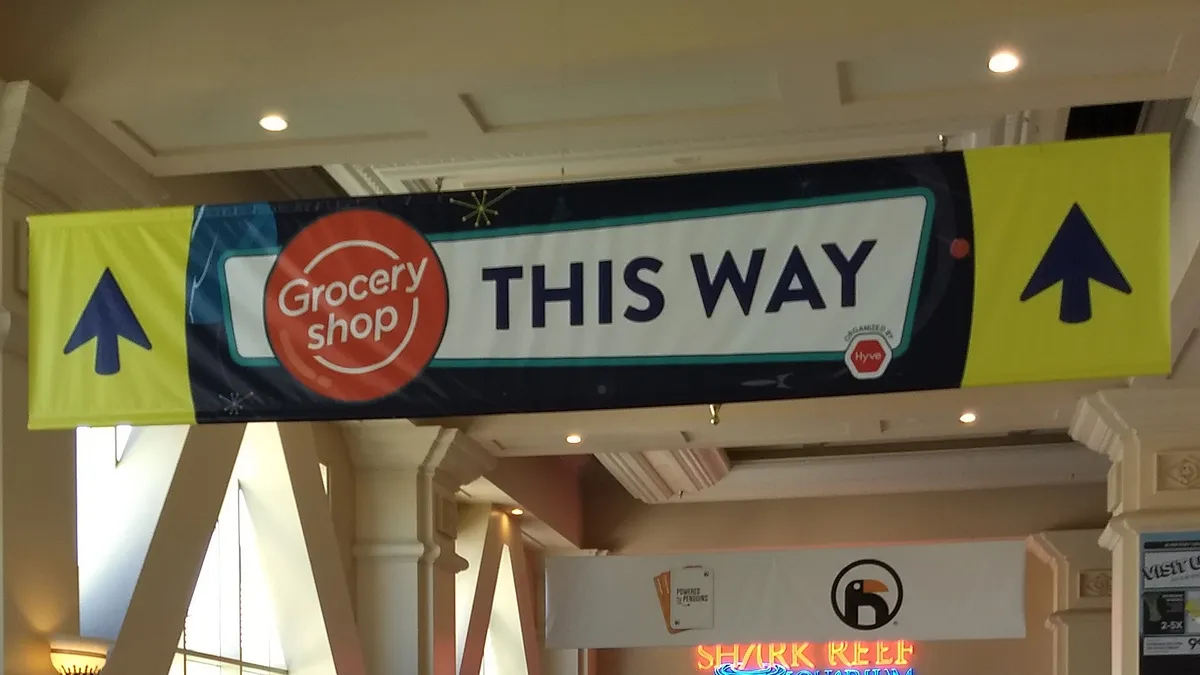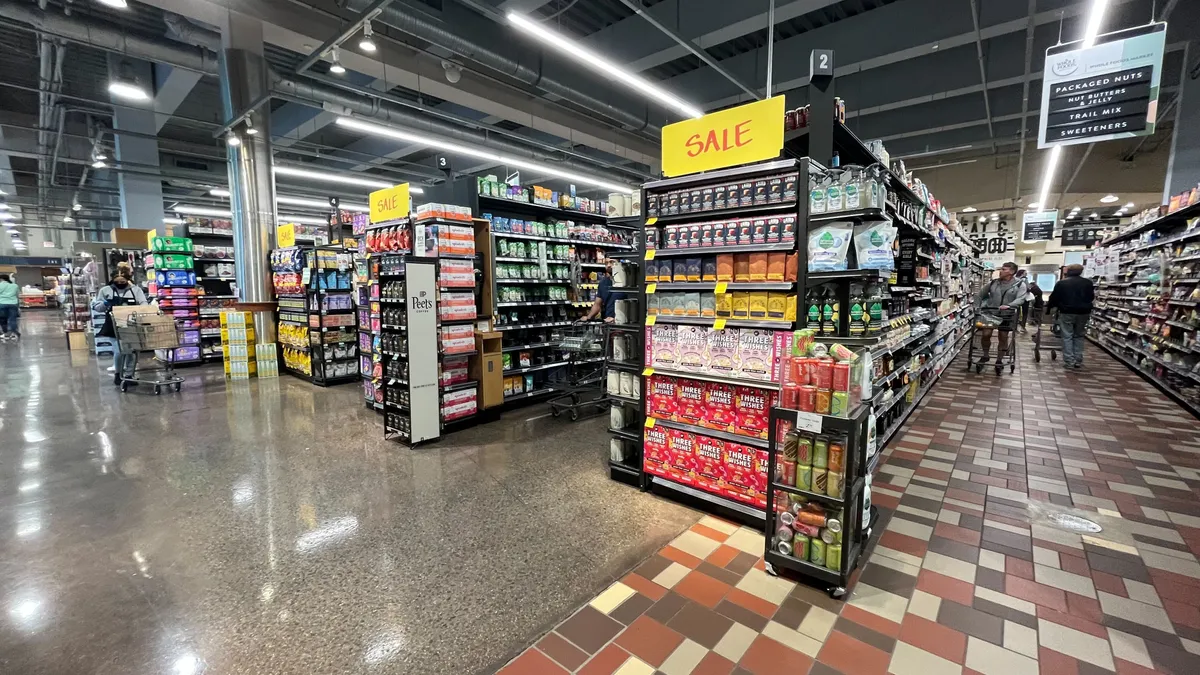Dive Brief:
- During Amazon’s most recent earnings call last week, CFO Brian Olsavsky said the e-tailer plans to add more Whole Foods stores, including locations in California, Washington, D.C. and Austin, Texas, according to a Seeking Alpha transcript.
- Olsavsky also hinted that Amazon is experimenting with additional store configurations, which could include new grocery formats. “We are experimenting with a lot of formats," he said during the call. "I think that Whole Foods really gives us a vast head-start on that and a great base."
- Amazon reported its tenth straight profitable quarter, with sales up 34% to $43.7 billion, including $1.3 billion from Whole Foods. The company’s net income of $256 million was essentially flat from the same period last year.
Dive Insight:
Wall Street has been closely watching for further signs of what Amazon plans to do with Whole Foods following its recent $13.7 billion purchase of the organic and natural foods pioneer. During the company's earnings call last week, Amazon's CFO hinted at some potential changes the e-commerce giant is considering implementing.
"There will be a lot of work together between Prime Now, AmazonFresh, Whole Foods, Whole Foods products on the Amazon site, Amazon Lockers at the Whole Foods stores. So, there will be a lot of integration, a lot of touch points and a lot of working together as we go forward," Olsavsky said in the transcript. "And we think we'll be also developing new store formats and everything else just as we talked about in the past before Whole Foods. ... So, we are experimenting with a lot of formats. I think that Whole Foods really gives us a vast headstart on that and a great base.”
This implies big things for Amazon, and for its Whole Foods relationship. Instead of adding new Whole Foods formats — as other publications that misquoted Olsavsky have reported — the e-tailer seems to view Whole Foods, at least in part, as a lab that will help it develop new physical retail stores across industries, which could include grocery.
Olsavsky also supports the idea that Whole Foods is one piece of a highly integrated grocery solution that includes online sales, store sales, personal technology and the e-tailer’s Prime loyalty program. He indicated, too, that Whole Foods’ stores could become showrooms for Amazon services and technology — a physical space where the e-commerce giant can interact with customers. Just as Amazon Books stores are more about showcasing Kindle readers and new titles for shoppers to buy online, Whole Foods stores could become spaces where Amazon drives adoption of its AmazonFresh and Prime Now delivery services.
Quartz writer Alison Griswold, who also found much to discuss in Olsavsky’s comments, identified Apple stores as examples of physical showrooms for a company’s technology, and a way to solidify a relationship with consumers, in a recent article.
“Amazon sees Whole Foods as its nexus of brick-and-mortar power,” she wrote. “Whole Foods will be where online meets offline for Amazon and its consumers, merging a variety of Amazon fulfillment and delivery operations (Prime Now, AmazonFresh, Amazon Lockers) with in-store customer experiences. Whole Foods will be a testing ground for Amazon’s other experiments in physical retail, be they Amazon Books stores, the mostly automated Amazon Go convenience stores, or something else entirely.”
At the very least, Olsavsky’s comments are yet another sign that Amazon’s acquisition isn’t about reforming or strengthening the Whole Foods brand. The e-tailer isn’t focused on rebuilding a specialty grocer, strengthening its standards or in making sweeping price cuts.
It’s focused on a much bigger picture. Indeed, Whole Foods is part of a broader grocery ecosystem that will seamlessly drive sales online and offline, all bound by the goal of unparalleled convenience, and all under the Amazon brand. That's a frightening prospect for competing grocers.










